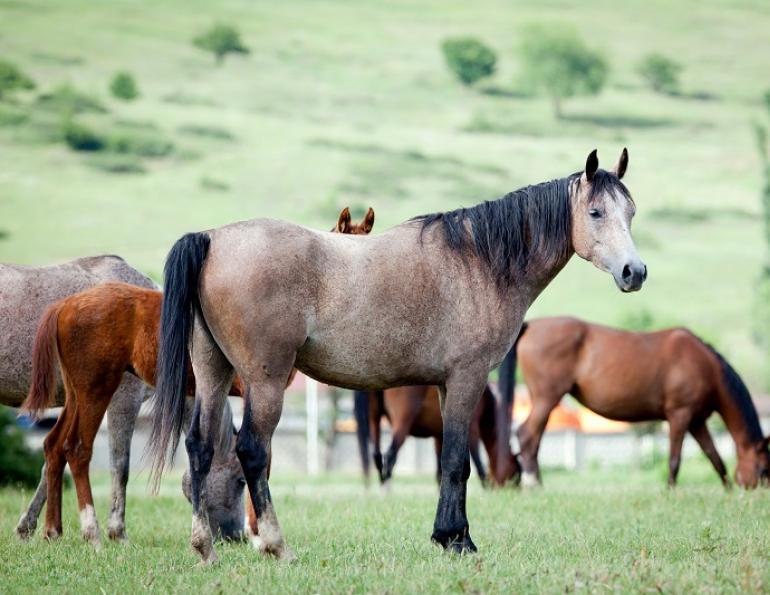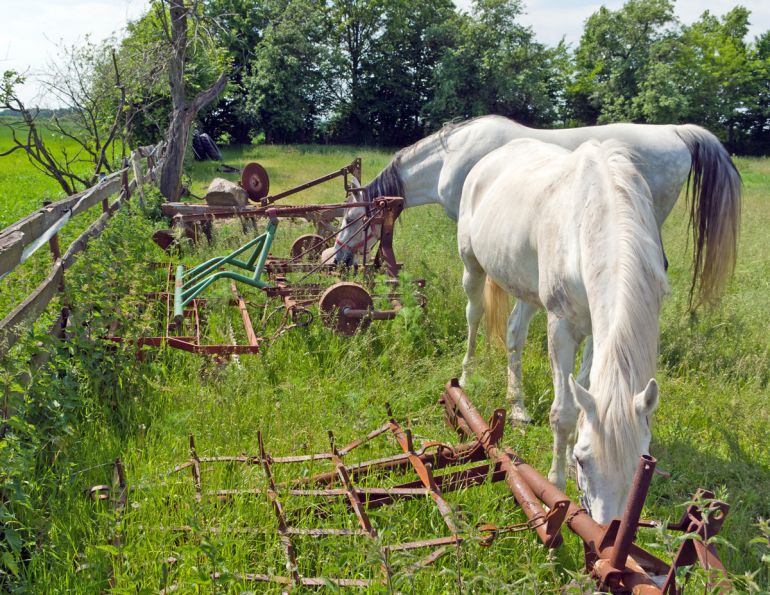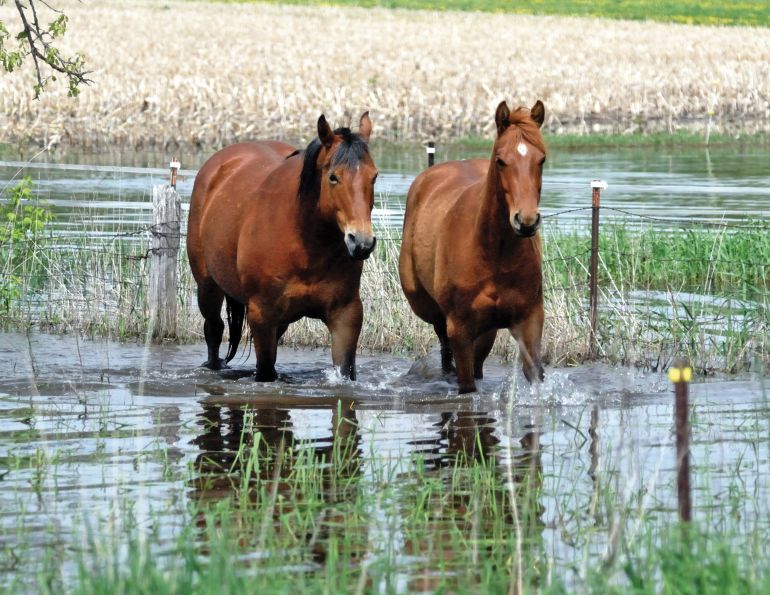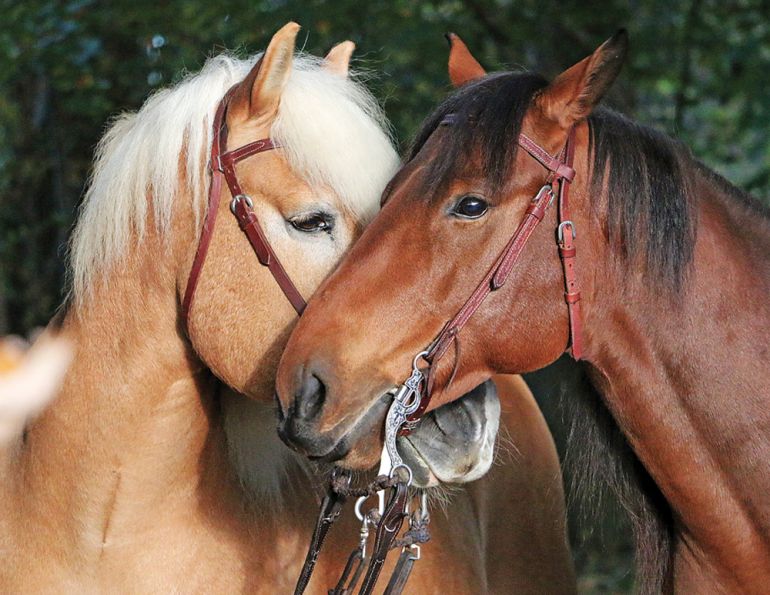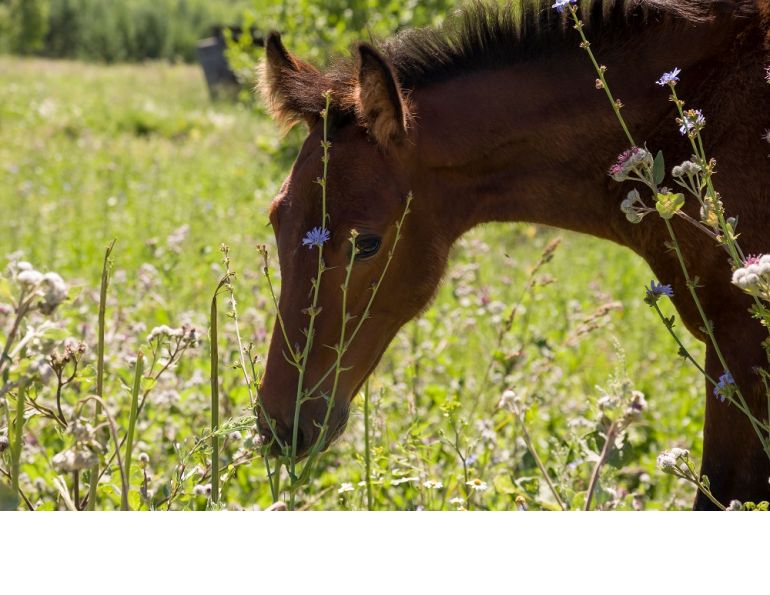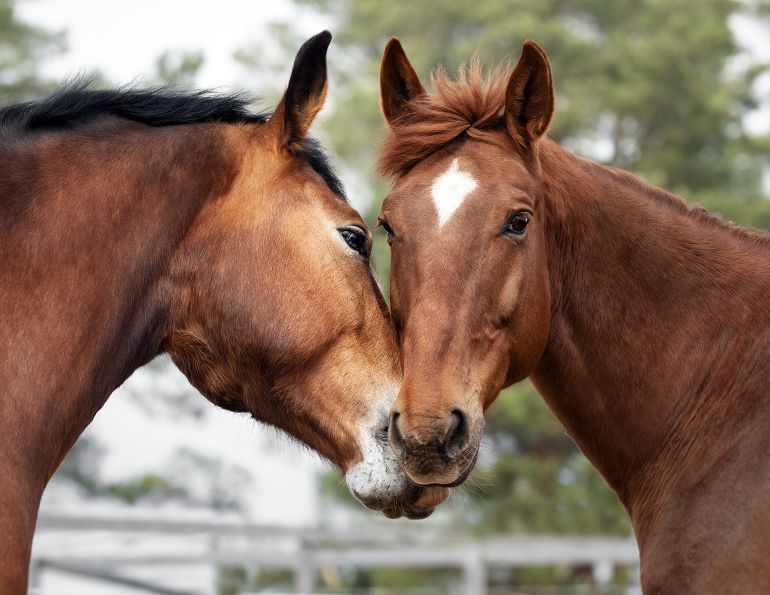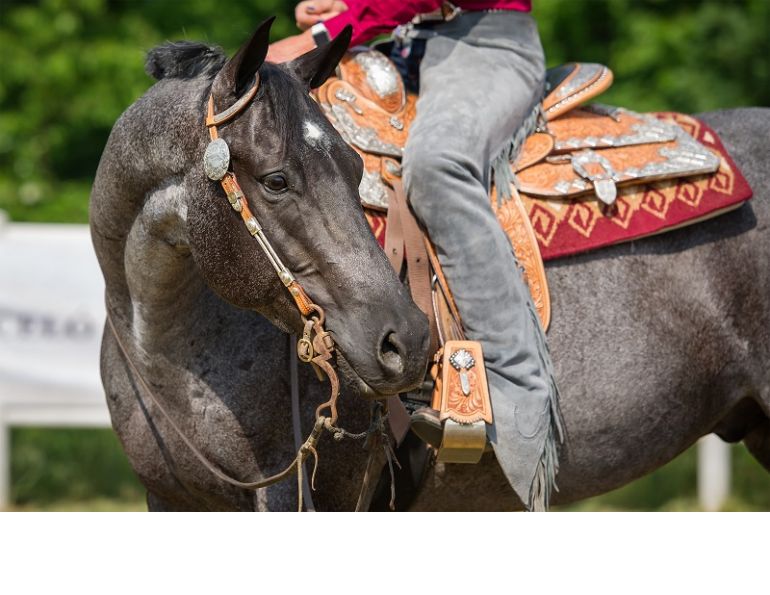The Inside Story
By Dr. Wendy Pearson, Ph.D. (Dr. of veterinary toxicology)
For as long as horses have been grazing the hillsides and meadows, the pest of parasite infestation has plagued them. Perennial as the grass, intestinal parasites find every possible opportunity to enter their horse host, and live out their life cycle.
It is reasonable to assume that every horse, no matter how carefully he is dewormed, will have a certain degree of parasite load. And in most cases, parasites do not cause clinical disease in horses. However, when parasite loads become too heavy, they can result in reduced feed utilization, reduced feed intake, and a low body condition score. And in some cases, parasites can contribute to incidence of colic in foals and older horses.
To make your horse parasite-free cannot, and should not, be the goal of any deworming program. Endoparasites (parasites that live inside the horse) are a natural and clinically uninteresting phenomenon of horse management. Indeed, they are as normal as the bacteria and fungi that also populate the equine gastrointestinal tract. But most horse owners wouldn’t consider treating their horses with antibiotics every eight weeks to get rid of the gastric bacteria, so why are we so compulsive about deworming our horses? I think the answer lies in the “icky” factor. We can see worms, and they’re kind of gross. And the thought of them wiggling around inside our horses kind of freaks us out. So as a result, we pump our horses full of dewormer – usually every eight weeks or so – and get a wonderful satisfied sense of retribution when close inspection of post-worming poop shows bot larvae and maybe some other long stringy white things that must be worms of some sort.
Related: How to Collect a Manure Fecal Egg Count
Anthelmintic Resistance
Most horse owners have at one time or another heard of anthelmintic (antiparasitic drug) resistance. But what is often misunderstood is that the resistance to dewormers is achieved by the parasite, and not by the horse. Anthelmintic resistance is a very dangerous occurrence, and one that is unfortunately propagated by our insistence on using frequent drug dewormers in the place of good management and hygiene. Currently we have just three classes of dewormers to use against the common parasites of horses – ivermectin, benzimidazoles, and pyrantel. And the effectiveness of these drugs is dwindling against our most common equine parasites, due primarily to rampant over-use. There has been some interest in herbal dewormers, but these should be used with extreme caution as none have been objectively evaluated in horse studies, and some like Black Walnut (Juglans nigra) can be very toxic and cause laminitis in horses. Some herbal dewormers with potential to be useful in horses are garlic (Allium sativum), wormwood (Artemisia absinthium), and pumpkin fruit and seed (Cucurbita pepo).
Controlling Parasites Without Drugs
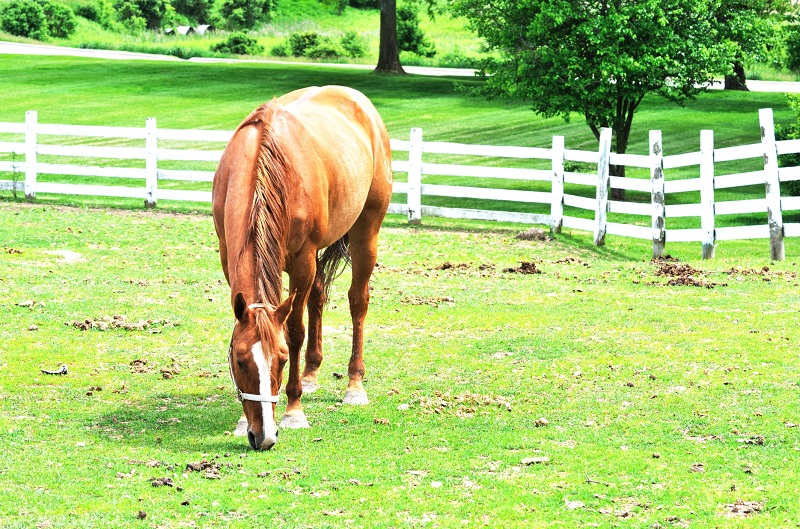
Manure left in paddocks and pastures is the most common source of parasite larvae. Photo: Thinkstock/Steverts
One of the best ways to control parasite infestations in horses is to be diligent about their environmental hygiene. Manure left on pastures is the single most common source of parasite larvae, and removing manure from paddocks at least twice per week can reduce your parasite load by more than 80 percent. On larger farms it may be more practical to rotate your grazing areas so horses are only left on a grazing site for two or three days before they are moved to a clean area. This can also be a very effective strategy for reducing worm-load.
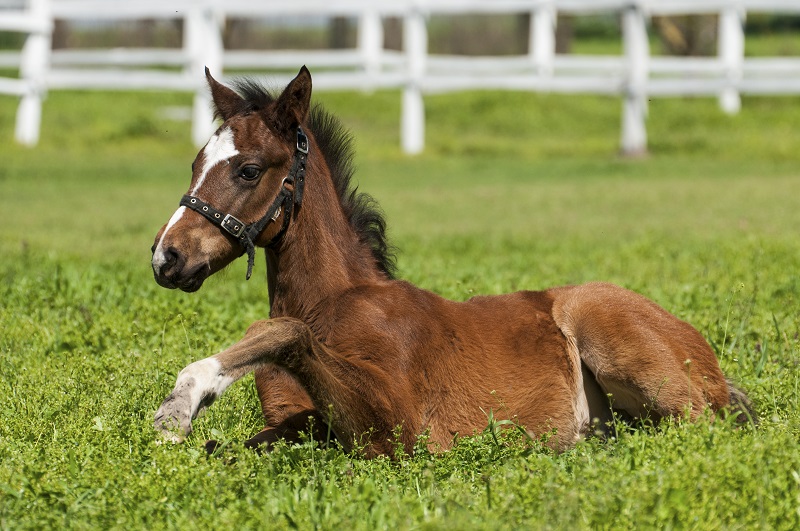
The parasite load can be reduced by more than 80 percent simply by removing manure from these areas at least twice per week. Photo: Thinkstock/Predrag1
While the wheelbarrow–manure fork–muscle approach is fine for small farms, there are tools available for those managing manure on larger farms. A large implement called “paddock sweeper” will remove manure and pasture debris on a large scale, operating at a rate of ten acres per hour. Mid-sized farms may prefer the smaller “paddock vacuum,” which is a self-propelled vacuum unit that literally sucks the manure piles off the grass.
When an excellent pasture hygiene system is in place, the regularity of deworming can be reduced dramatically. A fecal analysis once a year (see How to Collect a Fecal Sample) can tell you how well you’re keeping parasite numbers under control – the procedure is easy and inexpensive and will give you incredibly useful information. Most farms with good pasture hygiene need only deworm two or three times a year. Compare that with the more typical seven to eight times per year, and think of the money you’ll save on deworming your herd.
Assuming Good Management, What Parasites Should You Worry About?
There are some parasites that can cause problems in horses, depending on the horse’s age and health status. The important ones are summarized below:
Ascarids
Ascarids are generally not a problem in adult horses. Horses will usually develop immunity to ascarids around eight to twelve months of age. However, foals can be vulnerable to ascarid infections and should be dewormed against them at two to three months of age, and again at six months. Ascarids (Parascaris equorum) are very large worms measuring as much as 15 inches, and the adult lives curled up within the small intestine – a pretty small space for a very large worm! Severe infestations of ascarids can cause intestinal perforations that can be fatal, but these cases are relatively rare. More commonly, ascarid infection is associated with chronic diarrhea and subnormal growth, which is caused by the ascarid interfering with nutrient digestion and absorption, particularly of protein. Again, it is important to deworm foals at two to three months and again at six months. If you skip the two to three month dose, there is a risk that a large number of worms will get expelled with the six-month dose, causing blockage of the intestine. Ascarids in most geographical areas are now resistant to ivermectin, and there is some resistance reported to pyrantel. Benzimidazoles are still effective against ascarids.
Strongyles
The horse is attacked routinely by about 54 species of strongyles, with the major species being Strongylus vulgaris, Strongylus edentatus, and Strongylus equinus. When the horse ingests the third-stage larvae of strongyles, they curl up and take residence under the mucosa lining the large intestine. After eight days, they molt and penetrate the walls of the small arterioles under the mucous membranes, before beginning their long migration through the small blood vessels towards the larger arteries. Once the larval migration is complete, they return to the wall of the intestine to mate and lay eggs. The full migration can be completed in about 90 days, but it often takes much longer.
Colic in horses has been associated with heavy strongyle infestations. This is due to the fact that along the migratory route, the large strongyles leave characteristic inflammation and fibrin, which, when many larvae cross paths in the same blood vessel, can actually occlude the lumen of the vessel. In severe cases, this can obstruct blood flow to the intestinal mucosa, leading to virtual paralysis of the musculature moving digesta along the gastrointestinal tract. This leads to the painful distension of the bowel by trapped digesta and gases. For this reason, the large strongyles are considered the most important parasites in horses, with S. vulgaris being the most pathogenic.
Large strongyles can be effectively controlled with any of ivermectin, benzimidazoles and pyrantel as resistance has not yet been reported. However, small strongyles have some level of resistance to ALL three drug classes. Ivermectin still has some efficacy in some areas and is probably the best choice for small strongyles. It is important to note that large strongyle infections are relatively rare in Ontario.
Strongyloides westeri
This rather odd parasite has both free-living and parasitic generations. The larvae that come from the parasitic females come from unfertilised eggs (due in no small part to the fact that parasitic males don’t exist). The offspring from parasitic females are termed “homogonic” meaning that they arise from only one gonad. The relationships between the free-living and parasitic generations are quite complicated, and are beyond the scope of this article. However, an important consideration is that the life cycle is very short, and can be completed within two weeks. This means that populations within a stable can build up to alarming levels within an extremely short period of time. Oddly, the adult worms are encountered almost exclusively in suckling and weanling foals. And though the infection is transmitted from dam to foal through the mare’s milk, the mare rarely sheds any S. westeri eggs in her feces. The result is usually diarrhea in the foal at around ten days of life – often coinciding with the mare’s first post-partum heat. Some evidence has been presented which suggests that foal heat diarrhea is actually caused not by the changing composition of the mare’s milk, as is usually suspected, but rather by heavy infections of S. westeri. Generally it is not necessary to deworm for Strongyloides as the foal will develop immunity to the parasite within the first months of life.
Stomach Bots
Stomach bots are the larvae of the adult bot fly (Gasterophilus sp.). North America has three primary species, which can be identified by the body part of the horse that they select to lay their eggs on. G. intestinalis, the most common bot fly, lays eggs on the shoulders and forelimbs, and the larvae are signalled to hatch by the horse’s warm lips and breathe coming into contact with them. G. nasalis likes to deposit their yellowish-white eggs on the hairs of the space between the jawbones, while G. hemorrhoidalis prefers to lay black eggs on the short hairs that adjoin the lips. All three of these species hatch outside the horse and enter the horse’s mouth as the horse licks them (G. intestinalis), or they crawl downwards towards the chin (G. nasalis), or burrow into the epidermis and into the mucous membranes of the mouth (G. hemorrhoidalis). Once inside the mouth, these bot species burrow into the pockets between the molar teeth and develop for a period of weeks. The second larval stage is then swallowed, and they attach themselves to the lining of the stomach. The final stage larva attaches itself to the lining of the small intestine and waits for nine months until spring. Once spring arrives – no one actually knows HOW the bots know it’s springtime! – the bots release their grip on the intestinal surface and are passed out with the feces. They then burrow into the ground to pupate and grow into an adult fly.
Bots generally do not cause clinical disease in horses, but by controlling their springtime shed we can reduce the numbers of adult flies. For this reason it is recommended that horses be treated for bots with an ivermectin/praziquantel product in the fall.
Related: Biosecurity on the Horse Farm
Tapeworms
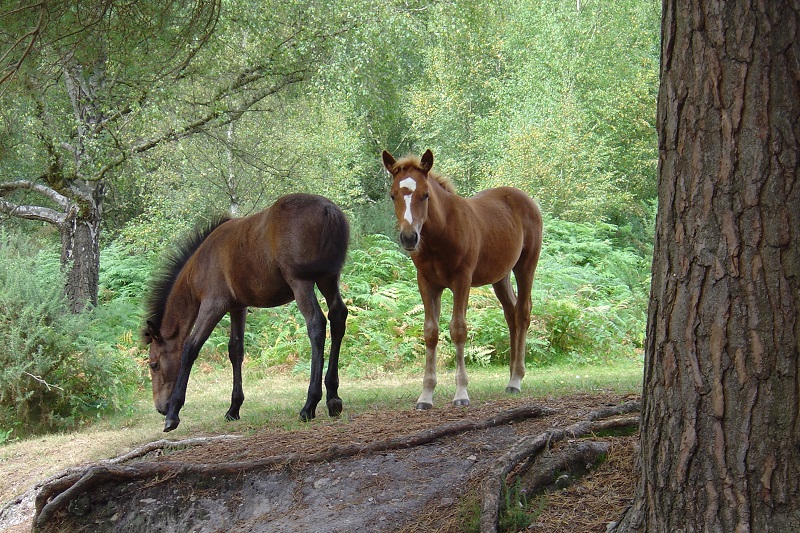
In weanlings or horses over 20 years of age, tapeworm infections can be associated with colic, unthriftiness, and weight loss.
There are about three species of tapeworms, and their intermediate state grows happily inside a grass mite, which climbs onto pasture grasses, which are then eaten by the horse. The immature tapeworm then grows and matures inside the horse in about two months and attaches to the lining of the small intestine. The eggs then pass out in the horse’s feces and are eaten by the grass mite, and the cycle continues. Tapeworms are reported in at least 50 percent of grazing horses, and usually do not cause clinical disease. However, in weanlings or older horses (over 20 years) tapeworm infections can be associated with colic, unthriftiness, and weight loss. Deworming for tapeworm is usually accomplished by dosing with ivermectin/praziquantel once per year, usually in the fall.
Take Home Message
Intestinal parasites are a normal part of being a horse, and need not be associated with clinical disease. Good environmental hygiene can greatly reduce the need for anthelmintic drugs, and deworming should only be necessary two to three times per year for healthy adult horses. More frequent deworming is necessary for the foal in the first year of life.
Printed with permission from www.horseherbs.com.
Main photo: Canstock/Melory



